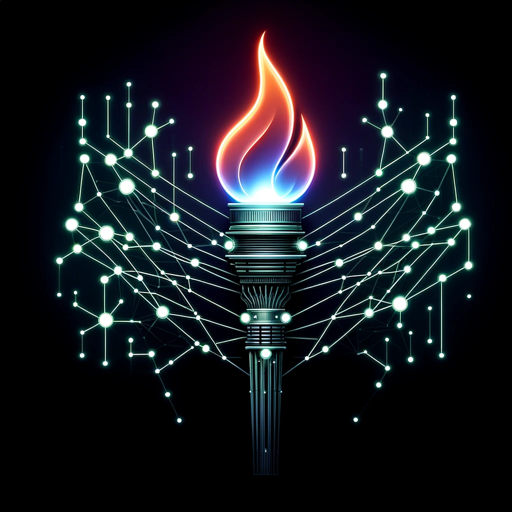Pytorch Model Implementer-AI-powered Pytorch Model Implementer
Optimize Your Neural Networks with AI
Related Tools
Load More
PyTorch Oracle
Expert in PyTorch, adept at simplifying complex concepts.

GPT Architect
This GPT helps you build new GPTs.

HuggingFace Helper
A witty yet succinct guide for HuggingFace, offering technical assistance on using the platform - based on their Learning Hub

Fine Tuning Master - Data Crafter
Expert in crafting JSONL conversational datasets.

Python Deep Learning Assistant
A GPT to help users with some of the most popular deep learning frameworks.

Pytorch Transformer Model Expert
Comprehensive expert on Pytorch transformer models, with a vast range of sources
20.0 / 5 (200 votes)
Introduction to Pytorch Model Implementer
Pytorch Model Implementer is designed to facilitate the process of building, training, and deploying deep learning models using the PyTorch framework. It provides a suite of tools and functionalities aimed at simplifying the complex tasks involved in model development, from defining neural network architectures to optimizing performance and managing training processes. By leveraging PyTorch's flexibility and dynamic computation graph, Pytorch Model Implementer helps researchers and developers create custom models tailored to specific tasks, such as image classification, natural language processing, and reinforcement learning. The design purpose is to streamline the workflow of model development and provide robust support for experimentation and iteration. For example, a user can quickly prototype different network architectures, experiment with various optimization techniques, and deploy trained models in production environments with ease.

Main Functions of Pytorch Model Implementer
Model Building
Example
Using predefined layers and modules to create custom neural network architectures.
Scenario
A computer vision researcher designing a convolutional neural network (CNN) for image classification can use the Pytorch Model Implementer to define various layers (convolutional, pooling, fully connected) and easily experiment with different configurations.
Training Management
Example
Automating training loops, including data loading, forward pass, loss computation, backpropagation, and optimization.
Scenario
A data scientist working on a natural language processing task can utilize built-in functions for managing the training process, ensuring efficient use of resources and consistent logging of performance metrics.
Performance Optimization
Example
Implementing techniques like learning rate scheduling, early stopping, and gradient clipping.
Scenario
An AI engineer optimizing a deep reinforcement learning model can apply advanced optimization techniques provided by the Pytorch Model Implementer to enhance model performance and prevent issues like overfitting or exploding gradients.
Ideal Users of Pytorch Model Implementer
Researchers
Researchers in academia or industry who focus on developing new algorithms and exploring novel neural network architectures. They benefit from Pytorch Model Implementer's flexibility and support for rapid prototyping, allowing them to test hypotheses and iterate on model designs quickly.
Data Scientists and AI Engineers
Professionals who build and deploy machine learning models for practical applications. They benefit from the comprehensive suite of tools for managing the entire model lifecycle, from initial development to deployment, enabling efficient workflow management and performance tuning.

Using Pytorch Model Implementer
1
Visit aichatonline.org for a free trial without login, also no need for ChatGPT Plus.
2
Ensure you have the latest version of Python and PyTorch installed on your system for compatibility with Pytorch Model Implementer.
3
Familiarize yourself with basic PyTorch concepts, such as tensors, autograd, and neural network modules, to efficiently use the implementer.
4
Explore the documentation and tutorials provided on the website to understand different use cases and examples of how to build and optimize models using the tool.
5
Start designing your neural network by selecting and configuring layers, optimizers, and loss functions through the intuitive interface, or by writing custom scripts using the provided APIs.
Try other advanced and practical GPTs
PyTorch Lightning Helper
Optimize your PyTorch Lightning code with AI

Optimización de Libros [Autor KDP]
AI-powered book optimization for KDP.
![Optimización de Libros [Autor KDP]](https://files.oaiusercontent.com/file-zwy0tbVzC2xwHIZeI5N0DICH?se=2124-04-19T10%3A41%3A42Z&sp=r&sv=2023-11-03&sr=b&rscc=max-age%3D1209600%2C%20immutable&rscd=attachment%3B%20filename%3DAnalista%2520de%2520Patrones%2520Exitosos%2520en%2520Amzn.png&sig=PbhInQ/CIgz0CcMUUYdr12NKpxrGzTB0ZaM/V%2BowH50%3D)
KDP Assistent
AI-powered book design and formatting

KDP Book Brainstorming Partner
AI-powered brainstorming for low-content KDP books.

KDP Insight Wizard
AI-Powered Insights for KDP Success

Conversational Cold Email
Conversational AI for Cold Email Success

👌Academic Assistant Pro
AI-powered academic writing made easy

Academic Assistant Pro
AI-powered support for academic success.

Quiz Exam Pro: Create Your Own School Quiz Test
AI-powered personalized quiz creation tool.

GAS & GCP Pro
Enhance Google Apps with AI Power

Code Wizard App Script
Automate Google Workspace tasks effortlessly with AI

Redbubble Helper
Boost your Redbubble sales with AI-driven content optimization.

- Research
- Performance Tuning
- Model Training
- Deep Learning
- Neural Networks
Pytorch Model Implementer Q&A
What is Pytorch Model Implementer?
Pytorch Model Implementer is a tool designed to simplify the process of building, training, and optimizing neural network models using PyTorch, providing an efficient workflow for deep learning practitioners.
Can I use Pytorch Model Implementer without prior deep learning knowledge?
While some basic understanding of deep learning concepts is beneficial, the tool provides comprehensive documentation and examples that can help beginners get started and learn as they go.
What kind of models can I build with Pytorch Model Implementer?
You can build a wide range of models, including convolutional neural networks (CNNs), recurrent neural networks (RNNs), transformers, and custom architectures tailored to specific tasks such as image classification, natural language processing, and more.
How does Pytorch Model Implementer optimize model performance?
The tool offers advanced features such as neural architecture search, hyperparameter tuning, and gradient flow analysis, helping you design models that achieve high performance with efficient computational resources.
Is Pytorch Model Implementer suitable for research purposes?
Yes, Pytorch Model Implementer is highly suitable for research as it allows for rapid prototyping, experimentation, and iteration on various neural network architectures and configurations, making it ideal for both academic and industrial research.